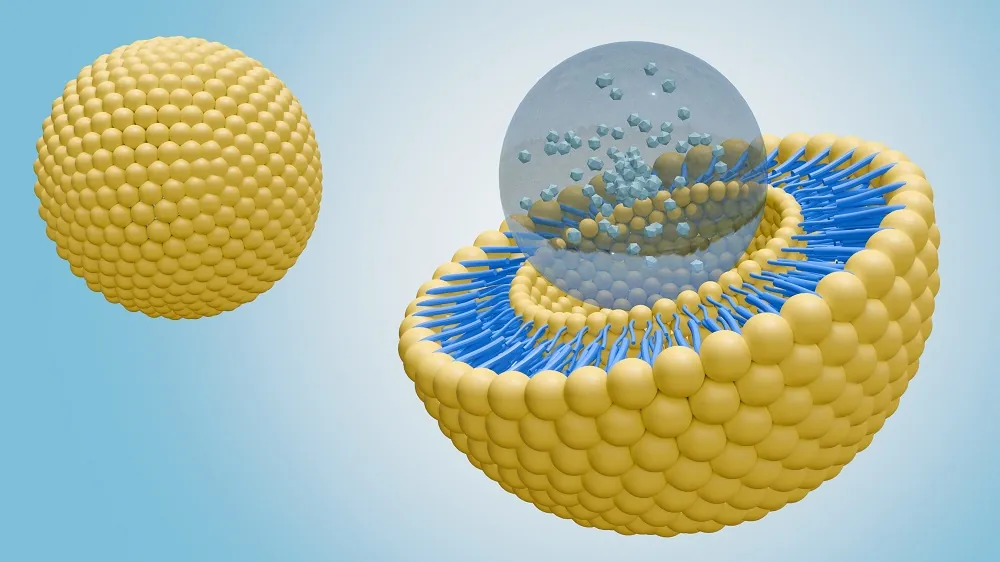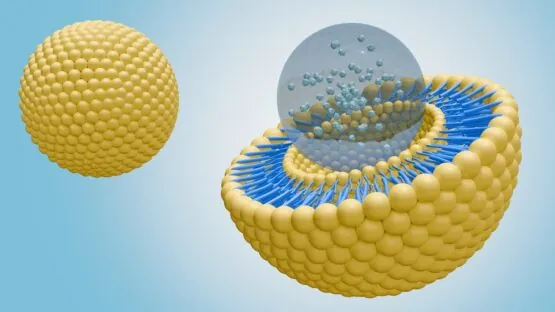Researchers have investigated a never-before-used method of transfecting senescent mesenchymal stem cells (MSCs) and published their results In the Cell journal Molecular Therapy Nucleic Acids.
Detergents for gene therapy
Altering the genetics of a living person is much trickier than altering them in cells in a dish, and it requires entirely different approaches. One of the most obvious concerns is the reliability of the intervention itself; cells in a dish can be simply thrown away if they are found to be unsuitable, but a flawed gene therapy in a person may lead to cancer.
The most well-known method of delivering gene therapy is with a viral vector; however, such an approach carries its own risks, including both cancer and an inflammatory immune reaction that may accelerate aging [1]. Liposomes, particles made out of fat molecules, are the most commonly investigated replacements [2]; however, they carry their own risks of toxicity, and they are not as effective as viruses in delivering genes [3].
Niosomes are similar to liposomes, except that they replace phospholipids with non-toxic polysorbate compounds that are found in commercial detergents [4]. Previous work has investigated niosomes in such contexts as bone regeneration [5] and retinal therapy [6]. The best formulation for niosomes for any particular use is still in question, and these researchers have investigated how such additions as squalene [7], cholesterol, and even simple sucrose [8] might increase transfection.
To the researchers’ knowledge, using niosomes to alter the genes of senescent MSCs has never been previously attempted, and so they investigated multiple formulations to determine which is the most effective.
Testing multiple formulations
This work used two separate populations of umbilical cord-derived MSCs that were driven senescent through the application of Palbociclib, which disrupts the normal cell cycle. These cells were confirmed to be senescent by both morphology and by SASP factors such as interleukins and CDKN1A.
The researchers complexed together their niosomes with reporter DNA (nioplexes) at different ratios, using either squalene or cholesterol in the presence or absence of sucrose. At specific DNA ratios, sucrose appeared to greatly increase particle size with squalene, although there was no linear relationship between particle size and DNA ratio. Sucrose seemed to suppress particle size with cholesterol at certain ratios, although there was still no linear relationship. Previous work has noted that cells find smaller particles easier to uptake [9].
There was a significant and noticeable relationship between sucrose and the ability of cholesterol-containing niosomes to properly complex, and thus protect, DNA, especially at the lowest ratios that contained more DNA. These results were not seen with squalene.
The differences between squalene and cholesterol when applied to cells, however, were stark when made in the absence of sucrose. Nioplexes made with squalene, particularly at a 10-to-1 niosome-to-DNA ratio, were excellent at transfecting non-senescent cells in both populations. However, these nioplexes, similar to the commonly used lipofectamine, were far worse at transfecting senescent cells than nioplexes made with cholesterol. The effectiveness of all nioplexes slightly dwindled between 24 hours and 72 hours.
Sucrose increased the effectiveness of both squalene and cholesterol-based formulations on senescent cells. At most ratios, the effect at 72 hours was even stronger than at 24, demonstrating an increase in lasting effectiveness.
With or without sucrose, however, nioplexes were far safer for cells than lipofectamine. This work showed that lipofectamine is highly toxic, killing large proportions of MSCs exposed to it, in both senescent and non-senescent groups. Neither squalene nor cholesterol formulations without sucrose led to an increase in mortality over controls, and adding sucrose only led to a very slight increase.
Interestingly, senescent and non-senescent cells were found to uptake the nioplexes through different methods of endocytosis, as confirmed by treatments that blocked these forms. Additionally, all of the tested therapies slightly increased SASP expression from cells that were already senescent.
This study was specifically on niosomes and nioplexes, focusing on targeting rather than a treatment’s potential effectiveness. The cells were not being modified to do anything other than report that they had been transfected, and there were no animals involved. Creating appropriate gene therapies to load into these niosomes, and determining that they are safe in living organisms, is the domain of future research.
Literature
[1] Fafián-Labora, J. A., & O’Loghlen, A. (2020). Classical and nonclassical intercellular communication in senescence and ageing. Trends in Cell Biology, 30(8), 628-639.
[2] Mitchell, M. J., Billingsley, M. M., Haley, R. M., Wechsler, M. E., Peppas, N. A., & Langer, R. (2021). Engineering precision nanoparticles for drug delivery. Nature reviews drug discovery, 20(2), 101-124.
[3] Yin, H., Kanasty, R. L., Eltoukhy, A. A., Vegas, A. J., Dorkin, J. R., & Anderson, D. G. (2014). Non-viral vectors for gene-based therapy. Nature reviews genetics, 15(8), 541-555.
[4] Villate-Beitia, I., Gallego, I., Martínez-Navarrete, G., Zárate, J., López-Méndez, T., Soto-Sánchez, C., … & Pedraz, J. L. (2018). Polysorbate 20 non-ionic surfactant enhances retinal gene delivery efficiency of cationic niosomes after intravitreal and subretinal administration. International Journal of Pharmaceutics, 550(1-2), 388-397.
[5] Attia, N., Mashal, M., Grijalvo, S., Eritja, R., Zárate, J., Puras, G., & Pedraz, J. L. (2018). Stem cell-based gene delivery mediated by cationic niosomes for bone regeneration. Nanomedicine: Nanotechnology, Biology and Medicine, 14(2), 521-531.
[6] Puras, G., Martínez-Navarrete, G., Mashal, M., Zarate, J., Agirre, M., Ojeda, E., … & Pedraz, J. L. (2015). Protamine/DNA/niosome ternary nonviral vectors for gene delivery to the retina: the role of protamine. Molecular pharmaceutics, 12(10), 3658-3671.
[7] Carballo-Pedrares, N., Sanjurjo-Rodriguez, C., Señarís, J., Díaz-Prado, S., & Rey-Rico, A. (2022). Chondrogenic differentiation of human mesenchymal stem cells via SOX9 delivery in cationic niosomes. Pharmaceutics, 14(11), 2327.
[8] Carballo-Pedrares, N., Kattar, A., Concheiro, A., Alvarez-Lorenzo, C., & Rey-Rico, A. (2021). Niosomes-based gene delivery systems for effective transfection of human mesenchymal stem cells. Materials Science and Engineering: C, 128, 112307.
[9] Singh, J., Michel, D., Chitanda, J. M., Verrall, R. E., & Badea, I. (2012). Evaluation of cellular uptake and intracellular trafficking as determining factors of gene expression for amino acid-substituted gemini surfactant-based DNA nanoparticles. Journal of nanobiotechnology, 10, 1-14.


